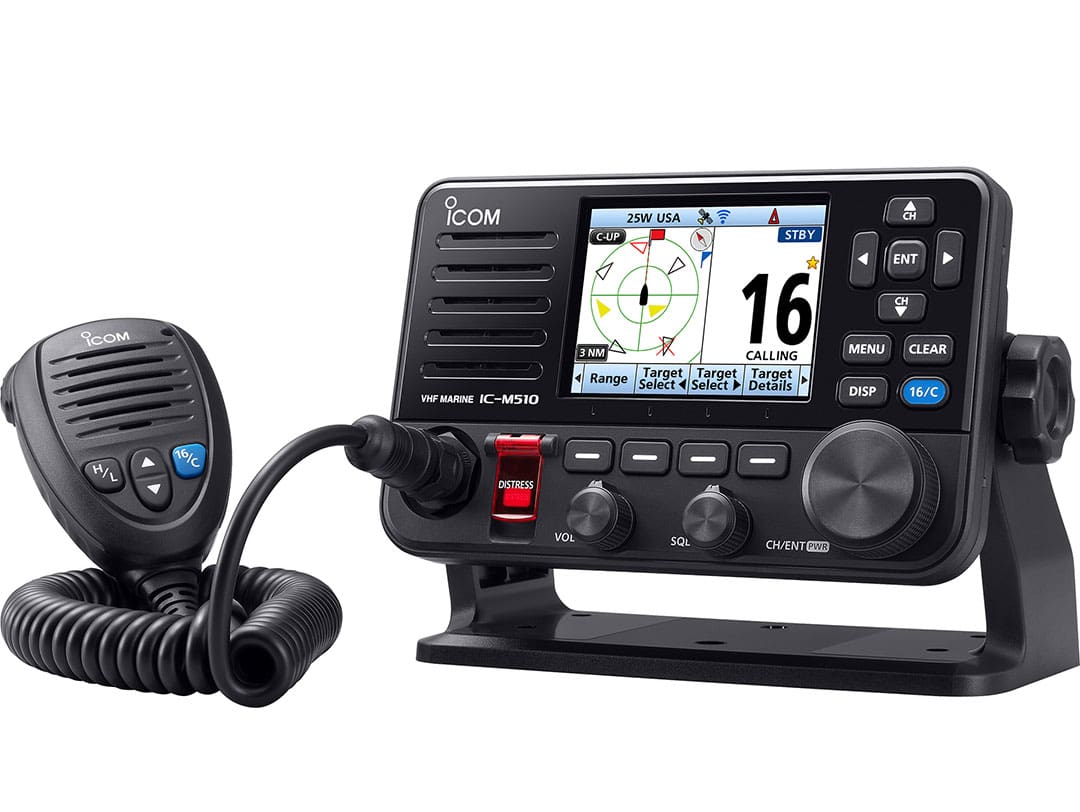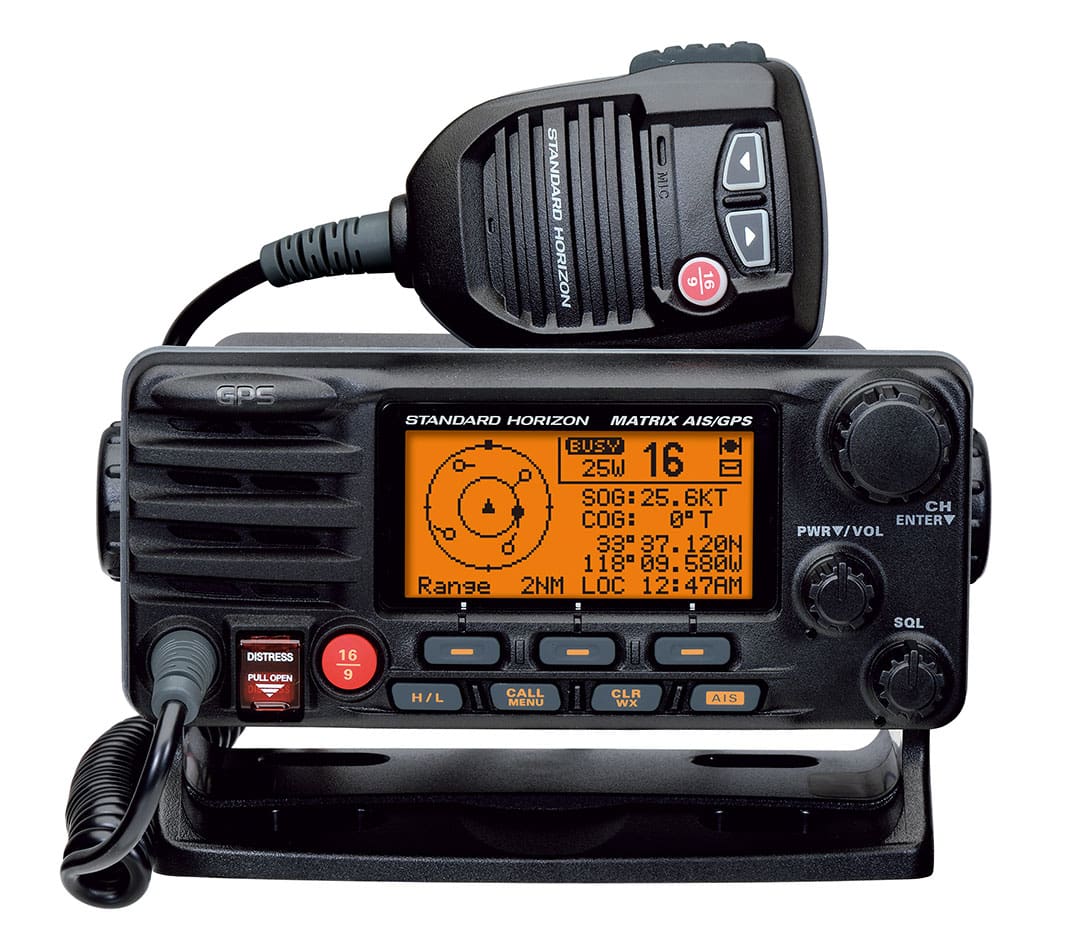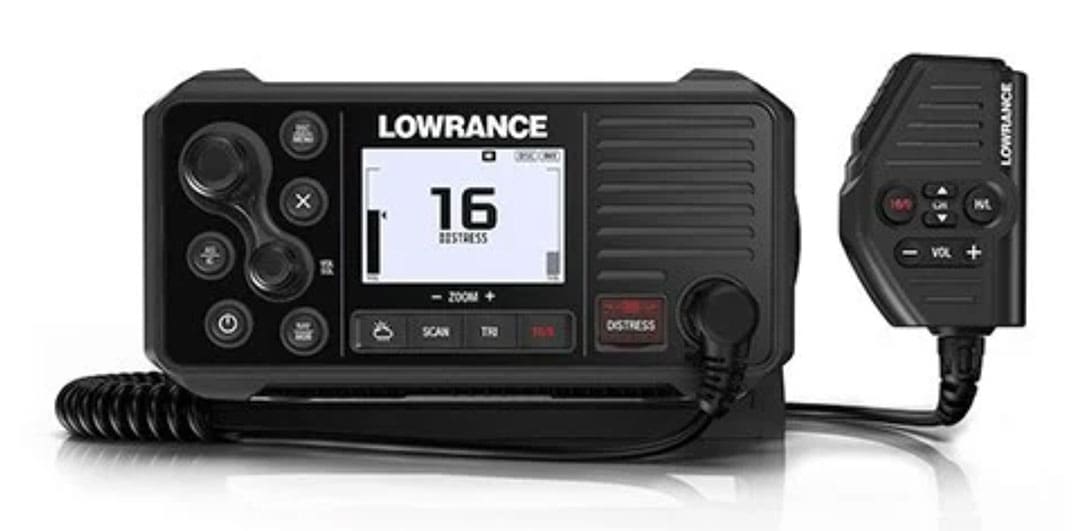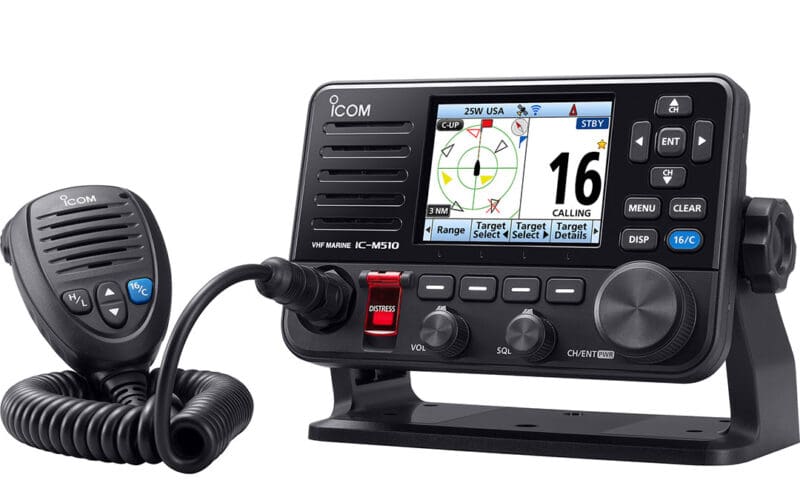
The mad rush to keep up with rapid advances in electronics for offshore sailing vessels can get our heads spinning. Every time we invest in the latest satellite telephone, WiFi-capable chartplotter or virtual instrument display, a newer, better unit enters the market, and many of us cannot wait to invest in the most current technology.
If there is one piece of equipment always evolving and always worth having in the latest version, however, it is the humble VHF radio. Over the last 30 years of coastal and offshore sailing, I personally have owned four permanent-mount VHF radios and two handhelds, and I guarantee I’ll replace my latest pair of VHF radios to stay current in radio technology at least once more before going off to that big cruiser anchorage in the sky.
With the rapid evolution of marine electronics, it is easy to fall behind the latest advancements in today’s market. The current array of VHF radios can be divided roughly into six distinct groups: permanent-mount VHF with GPS and Automatic Identification System (AIS) capability, permanent-mount VHF base station with only GPS capability, VHF/AIS without GPS and then handheld versions of these radios. Incidentally, virtually all late-model base station VHF radios also include Digital Selective Calling (DSC).
In my most recent research of VHF radios, virtually every radio I have seen on the market, both permanent-mount and handheld, also includes GPS coordinates right next to the radio channel in the display screen. AIS capability is an added feature in higher-end radios, and you must apply for an FCC license to be assigned a maritime mobile service identity (MMSI) code, which is a nine-digit number assigned to your boat. You may use the same MMSI code for all devices on your vessel.
In order to receive an MMSI number, go to the FCC website, pay the MMSI license fee and enter the MMSI number into your new DSC- or AIS-capable radio. If you are already a licensed HAM or marine SSB radio operator, you will be adding the MMSI to your existing file of FCC licenses.

Permanent-mount VHF/AIS/GPS
Until recently, the typical cruising yacht had a permanent-mount VHF radio with AIS and DSC capability, plus a separate GPS, which may or may not have been incorporated into a chartplotter. If you do not mind paper charts, which are actually a good idea for transoceanic crossings, you can sail to your heart’s content with this basic package.
Today, the standard for cruising yachts is a permanent-mount VHF radio with combined AIS, GPS and DSC. The extra GPS capability beyond that included in your chartplotter is one more navigation tool you can depend on if your main GPS device goes on the blink.
While underway on my 1966 Cal 30 sloop Saltaire, I keep three GPS systems running simultaneously: a Standard Horizon GX2200 Matrix VHF/AIS/GPS/DSC radio, a Garmin Echomap 64cv chartplotter and the old Garmin GPS 128 I used during my 2000-2005 circumnavigation — having recently replaced the memory battery and mushroom antenna for about 30 bucks, it works like new!
The best way to cover your bases on an offshore cruising boat these days is with a top-of-the-line VHF/AIS/GPS/DSC unit with chartplotter interface. AIS capability permits you to make emergency DSC contacts with your MMSI while identifying other vessels on your chartplotter. This could be vital to your survival in inclement conditions both inshore and offshore.
The Standard Horizon GX2200 VHF/AIS/GPS/DSC is a great example of the latest marine radio technology, offering a robust package for its modest price of about $400. This unit allows you to contact AIS-enabled vessels in your area using the DSC feature of the VHF radio. The unit graphically portrays your position relative to AIS targets and lets you know when an AIS target is approaching too close to your vessel via the closest point of approach (CPA) alarm.
The GX2200 screen also shows your GPS positon as well as those of AIS targets in your area. And when stuck in a fog bank, you can use Standard Horizon’s 30W Loud Hailer with fog signals, which may be activated by the GX2200’s collision avoidance alarm feature.
Besides the Standard Horizon GX2200, there are several other high-quality units on the market offering this mix of capability. The ICOM IC-M506 fixed-mount VHF with AIS/GPS/DSC is a capable, compact system. The IC-M506 can receive and transmit GPS position, along with course and speed, on the radio network.
For communication between nav station and dock, ICOM offers its optional SP-37 hailer speaker to be mounted out on deck or on the mast. This powerful 25W two-way hailer allows crew to communicate clearly while the wind howls and seas break over the deck — a lot of value, especially at a price of around $400.

The Lowrance Link-9 offers the same essential features as the Standard Horizon GX2200 and ICOM IC-M506, including a built-in GPS antenna and AIS target mapping on an LED screen or a separate chartplotter. The Link-9 communicates via NMEA 0183 with its chartplotter GPS and through NMEA 2000 with its network antenna connection.
The Lowrance is priced in the same general range as the GX2200 and IC-M506, roughly $500, and all three are relatively compact and well-constructed. When installing any of these radios, you will need to follow a wiring diagram closely in order to connect the radio to an external chart plotter. The remaining steps in pairing the two units will require you to make a series of prescribed entries on the chartplotter screen.
Garmin’s VHF 215 AIS Marine Radio is another top contender in the latest generation of marine VHF radios. The 215 offers the typical 25 watts of transmit power found in VHF base stations, and it offers NMEA 0183 and NMEA 2000 connectivity to pair up with virtually any late-generation chartplotter to be found on a cruising yacht.
Linking the Garmin VHF 215 or any other compatible VHF/AIS/GPS unit to a chart plotter will permit you to see other AIS-equipped vessels at night, giving you enhanced security against collision and most of all, peace of mind.
By the way, if your vessel has a late-model Garmin chartplotter, the 215 AIS VHF radio will blend in with the chartplotter and any other recent Garmin products you may have mounted in your nav station.

Handheld VHF/AIS/GPS
It wasn’t too long ago when the idea of having a handheld VHF radio with DSC/AIS/GPS capability was a bit far-fetched. Now it’s a reality. Even George Jetson would be blown away by the array of these handheld wonders and the versatility they offer today’s offshore sailors.
Naturally, some cruisers will ponder the question, “If I already have a DSC/AIS/GPS base station, what good is it to add a handheld to my electronics array?” On a small yacht, where you are virtually always no more than a few feet from the nav station while underway, you probably do not need to add the extra device.
On the other hand, what if your vessel’s main power supply goes out, leaving you completely bereft of electronics? That one little piece of equipment, the DSC/AIS/GPS in the grip of your hand, is essentially a complete nav station. Remember, with that little wonder, you can plot GPS coordinates on a paper chart, communicate with other vessels in your area, see other vessels on your patch of ocean and make a call through direct select calling if you require emergency assistance.
What’s more, you can bet that within a few years, the next generation of VHF handhelds will include a chartplotter. Since Garmin is one of the leaders in GPS-enabled VHF radios and handheld chart plotters, they are probably designing the world’s first handheld VHF/GPS/AIS chartplotter as I write. Now, that really would be a complete nav station in the palm of your hand!
Another of the current leaders in VHF/GPS/AIS handhelds is the ICOM M94D Handheld VHF DSC AIS, which ICOM claims is the world’s first AIS-capable handheld VHF radio. The M94D features a lithium-ion battery with 10 hours of battery life and a dot matrix grayscale LCD display.
With six watts of transmit power, the ICOM M94D is just a bit more powerful than the typical five watt handheld radios we have seen over the last 20 years or so. Just like base-mount AIS-capable VHF radios, the M94D presents a digital display of surrounding vessels, each one identified by name and MMSI.
Another interesting feature of the M94D is its AquaQuake draining function, which removes water from the speaker by — check this out! —vibrating at a high frequency, ensuring proper audio function. Drying by vibration? Who would have thought this kind of technology could be packed into a radio smaller than a cheeseburger?
The M94D is rated APX7 waterproof and sells for a very affordable $300, quite remarkable if you consider the relative newness of this incredible, miniaturized device.
Standard Horizon makes available its version of handheld VHF/AIS/DSC technology with its HX890NB floating 6W Class H DSC Handheld VHF/GPS radio. This unit, available for about $200, is an upgraded version of the earlier HX890, which made its debut soon after the ICOM M94D arrived at your local chandlery. With the HX890NB’s GPS function, you can enter waypoints as you would with any other non-charting GPS unit, such as the venerable Garmin 128.
Permanent-Mount VHF/GPS/DSC
If you are content with a dedicated VHF radio with only GPS as an added capability, you can choose from a wide range of models, some of them priced at well under $200. The assumption here, of course, is that you are fully aware of the absence of AIS in case of an emergency, which could entail a potential close encounter with another vessel while underway, particularly in coastal waters.
In such a dire situation, as long as you have DSC capability connected to an external GPS or even better, you can make a distress call that will automatically pass on your vessel’s name and GPS coordinates to the receiving station.
The Garmin VHF 215 with built-in GPS is a compact fixed-mount radio you can network to your chartplotter and other devices via NMEA 2000 or NMEA 0183. Its large display screen makes it easy to read GPS coordinates, and the unit’s removable handset keeps you in constant radio contact anywhere on the vessel.
An added feature of the VHF 215 is a built-in hailer, which allows you to communicate with crew out on deck. A sometimes overlooked item, the hailer can be a critically important communication device during storms or on final approach to an anchorage or marina slip.
The Standard Horizon GX1400G is a well-designed yet very economical VHF radio offering GPS coordinates on a brightly lit screen, along with DSC communication in an IPX8 water-resistant package.
As with other radios in its class, you will need an MMSI number to ensure other vessels can read your vessel ID information if you activate the DSC switch. In case there is a vessel in distress in your area, the VHF 215 constantly monitors channel 70 to receive emergency signals.
Besides the low price, another reason to consider the Standard Horizon option is the unit’s three-year waterproof warranty. If for any reason your GX1400G fails within three years of purchase, Standard Horizon will repair or replace the unit free, and that means no extra charges for handling or shipping.
Base-mount VHF/DSC
There are still some late-model base-mount VHF radios with only DSC capability as their extra feature, but these radios can still fill a critical role on our yachts. Remember, though, a VHF/DSC radio still must be connected to an external GPS in order to transmit your vessel’s position as long as your radio has an MMSI number.
One such popular model of VHF/DSC radio is the ICOM M330, which features a dot matrix display, directional keypad and soft keys, which are less slippery than hard plastic when your hands are wet.
The ICOM M330, which is rated IPX7 waterproof, retails for around $200, a hard deal to beat if all you need is a basic, compact, dependable communication device for sailing in settled conditions.
If you are staying strictly within U.S. inland or coastal waters with your DSC-only VHF radio, you can get by with an MMSI number from an approved private organization, such as BoatUS or United States Power Squadrons.
The radio you select for your sailing palace, regardless of make or features, will add greatly to your peace of mind while out on the water. And although having a VHF radio onboard is a U.S. Coast Guard requirement only for vessels over 65.5 feet long, this critically important communication tool is a must-have for all vessels, and that includes a handheld for your dinghy. ν
Contributing editor Bill Morris is a circumnavigator and author. His books include The Windvane Self-Steering Handbook (International Marine, 2004) and The Captain’s Guide to Alternative Energy Afloat (Seaworthy Publications, 2019).

